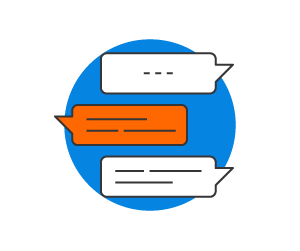By some estimates, procurement costs make up 60-80% of production costs for many manufacturers. Suppliers not only contribute to product innovation, they also help manufacturers achieve more effective production processes. Given the high dollar value associated with procurement, it comes as no surprise that supply chain teams are eager to learn how to improve supplier performance to deliver millions in savings for their organizations.
Most manufacturers use supplier performance management to measure and analyze a supplier’s work. Cost-cutting, continuous improvement, and better customer on-time delivery performance are all goals of improved supplier performance. When buying teams have a clear view of their suppliers’ performance, they can identify the best performing partners, make smarter, more profitable decisions, and develop more strategic partnerships.
But many manufacturers miss these opportunities as they continue to rely on outdated processes and improvement measures that are complex and cumbersome to implement. This blog post will explore a fictional manufacturing company, Acme Aerospace, and six strategies they used to improve their supplier performance across the organization.
Be Proactive With Your Supplier Improvement Strategies
One of Acme’s largest customers just experienced a huge increase in order for their newest turbine design. It’s great news for Acme - assuming they can keep up! Acme’s buyers enter the changes into their ERP, but they can’t see far enough ahead. Their system is set up to be 100% reactive. As the date approaches, they find themselves scrambling to find the needed parts, working overtime and running up costly rush delivery fees. This rearview approach causes headaches for every level of the supply chain. Acme’s executive team sees high dollar amounts tied up in inventory capital, its managers feel the pressure to deliver on KPIs, and buyers take the brunt of the workload as they tried to keep up.
To get ahead of changing demand, the executives decide to implement a new approach that provides predictive analytics insights to buyers and managers as they work to get ahead of changing demand and lagging supplier performance. Instead of spending hours compiling and analyzing week-old data, Acme’s buyers now automatically receive reports daily. Instead of simply trying to process hundreds of ERP messages, they receive a prioritized list every morning that they know will deliver real business value. Gone are the days of digging for past information and guessing at next steps. They are now free to work strategically.
Within the first month, Acme’s inventory levels are starting to go down noticeably, managers are able to focus more strategically on their KPIs, and buyers are accomplishing more in less time and with less effort. Acme’s customer on-time delivery is also improving, as predictive insights guide procurement to adjust POs and more effectively and timely. Things at Acme are looking up as they start to implement critical supplier improvement strategies.
Promote Buyer-Supplier Collaboration
For decades, studies have shown that supply chains can benefit greatly from improved communication with suppliers. Acme has been working toward this goal for years with mixed results. For example, buyers and analysts keep supplier scorecards, but  they are updated only about once per month, which leaves them making decisions based on outdated information. Buyers send POs and changes to suppliers, but they are sent in large batches with no prioritization, so significant time is spent on tasks that don’t bring real business value. These processes are slow - requiring up to two weeks for buyers to manually compile the data, send it via email, wait for the supplier to process them, and then manually enter the changes back into the ERP.
they are updated only about once per month, which leaves them making decisions based on outdated information. Buyers send POs and changes to suppliers, but they are sent in large batches with no prioritization, so significant time is spent on tasks that don’t bring real business value. These processes are slow - requiring up to two weeks for buyers to manually compile the data, send it via email, wait for the supplier to process them, and then manually enter the changes back into the ERP.
Speaking of the ERP, Acme’s buyers are inundated with ERP action messages. In order to keep up with an overwhelming volume, buyers are often left working evenings and weekends just to keep up. The work remains labor-intensive, hours become longer, and moral suffers. What’s worse is that improvement initiatives are hampered by inefficient processes and strategies.
One of the keys here is that suppliers must be well-informed. When buyers have easy access to critical information, they can communicate their needs more quickly and clearly, which leads to improved supplier delivery performance. From the top-down, Acme implements strategies and tools that promote better communication and collaboration. For example, buyers at different sites are now able to share performance and pricing information, which allows them to choose the best suppliers and keep pricing consistently under control.
Another of Acme’s improvement initiatives involves giving buyers the ability to assign and track recommended corrective actions, similar to the way many supply chains handle lean project management. Action messages are not only prioritized, but buyers receive recommendations for corrective actions. Those actions are then assigned and can be tracked by all stakeholders through a single platform. All of this makes communication more streamlined and effective, so suppliers understand buyers’ needs and have accountability for improving to meet them. The result is improved supplier on-time delivery performance, lower inventory levels, and potentially millions of dollars in savings.
Work Closely to Address the Most Critical Shortages
Acme’s buyers were buried under mountains of ERP action messages - to the point that they often worked evenings and weekends just to keep up. Every day they each received hundreds or even thousands in their queues. Demand at any supply chain is ever-changing, and their tools didn’t identify which messages hold the most value for the company. Each day they spend hours manually processing information through spreadsheets, which left little room for thinking and working strategically toward improvement.
A major step forward for Acme was to give their buyers and analysts a way to prioritize their action messages. Instead of trying to process hundreds every day and thousands every week, they are able to focus on the tasks that bring real business value to the company. This frees up their brain power to focus on strategic ways of saving the company money. These teams become more than just laborers; now they are strategic partners. Not to mention the fact that with a lighter, more meaningful workload, morale and retention improve dramatically. Not only are they making money for the company, but they’re able to get home in time for dinner!
When buyers focus on the most critical tasks at hand, supplier performance naturally improves since they are now providing the most critical parts when they are needed most. Buyers communicate their most critical needs and suppliers deliver at the critical time. That’s what it’s all about, right?
Use Automated Supplier Scorecards
Once the process for action messages is more streamlined, Acme’s buyers have time to focus on strategic supplier performance management. This is where real improvement is seen. One major step for Acme was to implement an automated process for supplier scorecards. In the past, scorecards were updated once a month (Maybe! Sometimes less.). The process required teams to manually gather POs, receipts, and defect data, then manually work them into spreadsheets. Under this system, buyers worked for weeks using old information, for the simple reason that updating scorecards required time they needed to finish their daily activities. If a team can’t see how suppliers perform against KPIs, how can they drive the most critical improvement initiatives?
Like many supply chains, Acme gauges supplier performance according to QCD - Quality, Cost, and Delivery. Using the old manual processes, Acme’s teams were able to get their suppliers to achieve goals on one or possibly two out of the three. Hitting all three KPIs simultaneously was far more elusive. Buying and management teams don’t have enough hours in their days to do all the work necessary for real improvement.
Acme started seeing real improvement when they gave their buyers a tool that provided automated daily scorecards. Under the new system, Acme’s teams can track performance in real time and communicate their improvement needs daily. Automated scorecards help buyers make smarter decisions, faster, which delivers significantly increased QCD performance.
Determine Root Causes & Initiate Corrective Actions
It’s not enough to merely track supplier performance; in order to see real improvement, companies must be able to diagnose root causes of supplier shortages and then assign improvement initiatives to address them. Acme found that their reactive approaches often failed to drive noticeable savings. There were significant delays in receiving critical information, and they had no insight into the root causes of issues.
Under their new system, Acme uses smart analytics to identify which deficiencies or shortages are costing the company the most money and what caused them. Armed with this information, buyers, analysts, and managers can now take steps to avoid future disruptions. Acme now has the ability to perform root cause analyses on low supplier performance and any disruptions that occur. Similar to the way they handle critical shortages, teams receive suggestions for corrective actions that can be assigned to suppliers and jointly tracked alongside them.
Jointly Manage Supplier Improvement Initiatives
Acme’s buying teams now have the ability to automatically identify and assign corrective actions to their suppliers. Their next goal was to improve accountability for their improvement initiatives. Under their old system, Acme’s buyers would send  improvement requests about once per month, but they depended on suppliers to self report their progress. There were not clear channels for tracking progress or results.
improvement requests about once per month, but they depended on suppliers to self report their progress. There were not clear channels for tracking progress or results.
Acme started by stressing to their buying teams the importance of holding suppliers accountable to improvement initiatives. The top-down approach served to instill a sense of urgency and a change in culture. Next, they provided mechanisms for buyers to assign and jointly track improvement initiatives with suppliers. Suppliers are now more actively engaged in improving their delivery performance, and they receive daily updates on their progress.
Bringing Supplier Strategies Together
Our fictional company Acme was stuck in second gear. They needed to employ new strategies and mechanisms that would allow their buyers and analysts to work more closely with suppliers in order to improve performance. Once these teams had access to updated information and analytics tools that could identify deficiencies and disruptions, their brain power was free to focus on strategic work and smarter improvements.
Keep these six strategies in mind as you and your teams determine how to improve supplier performance in your own organization. Improving supplier performance requires more than a short-term program or a few small tweaks. The process is always ongoing and requires new ways of thinking and new tools to gain a competitive advantage. To see how LeanDNA gives supply chain leaders the advanced tools they need to make smarter, more forward-looking decisions, check out our 2-minute video, LeanDNA Explained.
